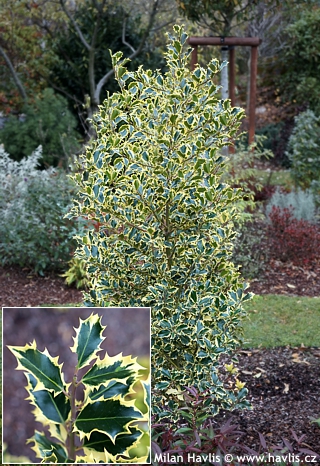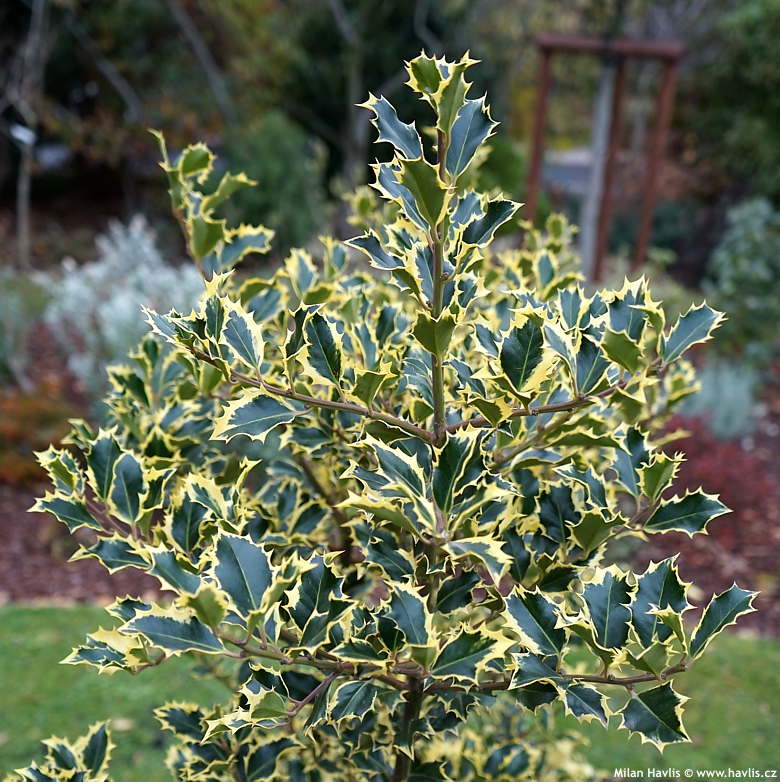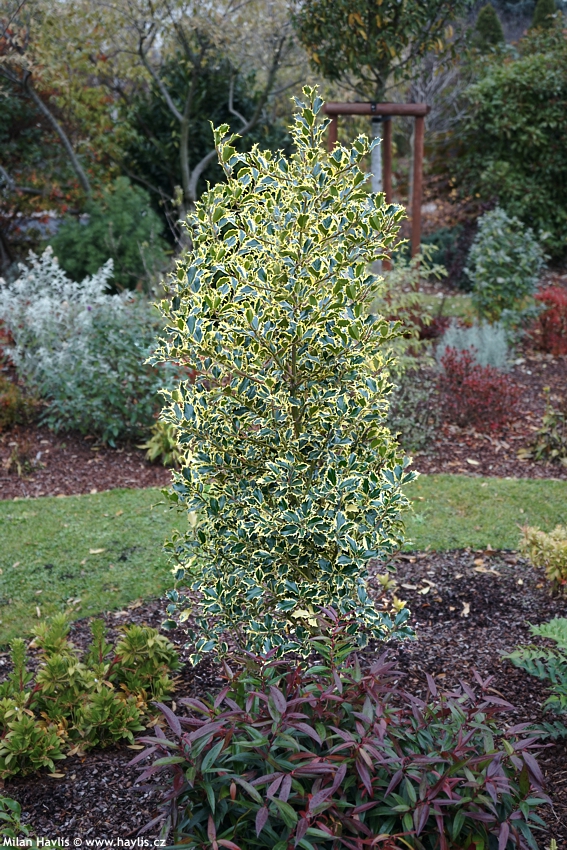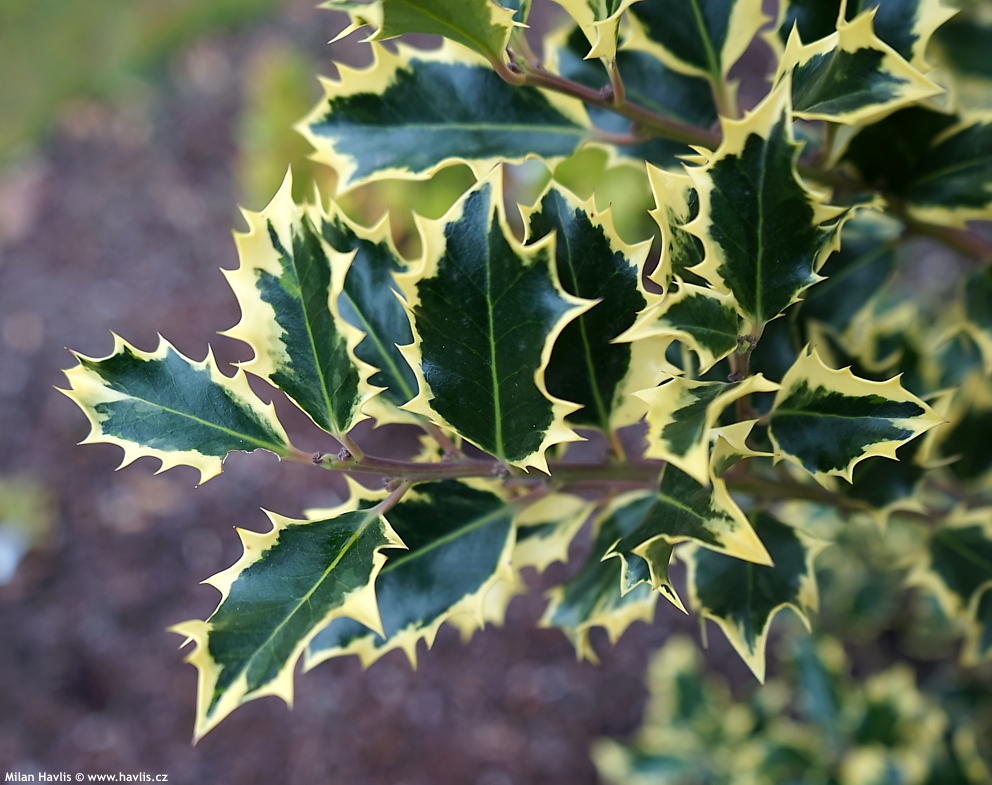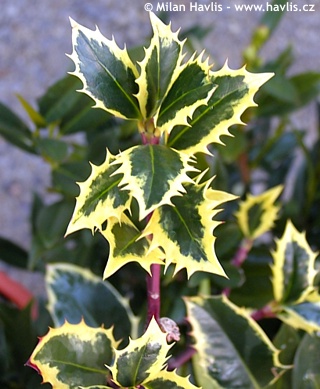Ilex aquifolium 'BRIOTS MENHIR' English holly - female
size/type
medium-sized shrub,taller shrub
usual height
2-2,5m
usual width
0,5-1m
leaves
evergreen broadleaf
colour of leaves
location
full sun to shade
soil type
acidic (peaty)
soil moisture requirements
evenly moist but well-drained
USDA zone (lowest)
5b (down to -27°C)
winter protection
for zone 5+6

for zone 7

categorized
Ilex
English hollies are among the most common evergreen and native plants of milder parts of Europe with high humidity – British Isles, north France, Benelux countries, and milder parts of north Germany. Various species form trees, shrubs, or thickets. They are absent from natural Central European landscape but can be cultivated without problems. They are renowned for glossy, often prickly leaves, and multiple variegated forms have been selected for garden cultivation.Description of the plant:
Briots Menhir is a beautiful holly introduction from 2016 which was found as a natural mutation of an older variety Madame Briot by H. Zintel Jr from the Netherlands. Its leaf shape and colour are almost identical with its parent but what makes it stand apart is a unique columnar habit which is unusual for a holly, and even less common for a variegated one.It makes 4-6 cm long, spiny, evergreen, leathery, and glossy leaves with dark green centres and pale yellow margins which take on a deeper shade when autumn approaches. Young leaves emerge rich purple-pink, just like the twigs. Being a female plant, it produces small red berries in autumn if pollinated by a male plant growing nearby. They are not edible nor poisonous but contain saponins which cause severe discomfort if eaten.
It grows slowly, some 10-15 cm per year into a slender, upright habit with rather uniform tiers of lateral branches. Its narrow habit makes it a great choice for small gardens and the evergreen foliage can brighten up even the coldest winter days with its cheerful colour. The variety is too young to determine its ultimate height with accuracy but is estimated around 2.5 m.
It bears a name of a French botanist and nurseryman Pierre-Louis Briot (1804-1888) whose father Louis-Dennis was a chief gardener of the gardens of Trianon in Versailles near Paris, France. In 1858 Pierre managed to breed his own variety of horse chestnut with pink flowers named Briotii, and he also came up with his own holly variety that he dedicated to his mother and called it Madame Briot.
Grow hollies in moist but well-drained, fertile soil. They can take periods of drought once established but dislike compacted, heavy-clay-based soils that turn very dry in summer, and often too wet in winter. If your soil is such, dig the planting hole only half the depth of the root ball, refine what you dig out and mix well with quality substrate of highly acidic level (low pH value). Using this mixture make a gradual slope from the stem to the original ground level and tamp it down as much as you can. Your root ball should not look like a molehill but more like a wide and flat mound. Mulch it well and keep watering it more often as it will be more prone to drying out as opposed to most common flat-in-the-ground transplanting. Hollies do best in full sun but can also grow in shade where they will lose their compact habit. Before and during winter when the soil is not frozen provide good watering. Hardy to about -27°C (USDA zone 5b).
Last update 21-11-2021
QUICK PRICE OVERVIEW
CURRENTLY SOLD OUT
WANT TO TRY A SIMILAR PLANT?












